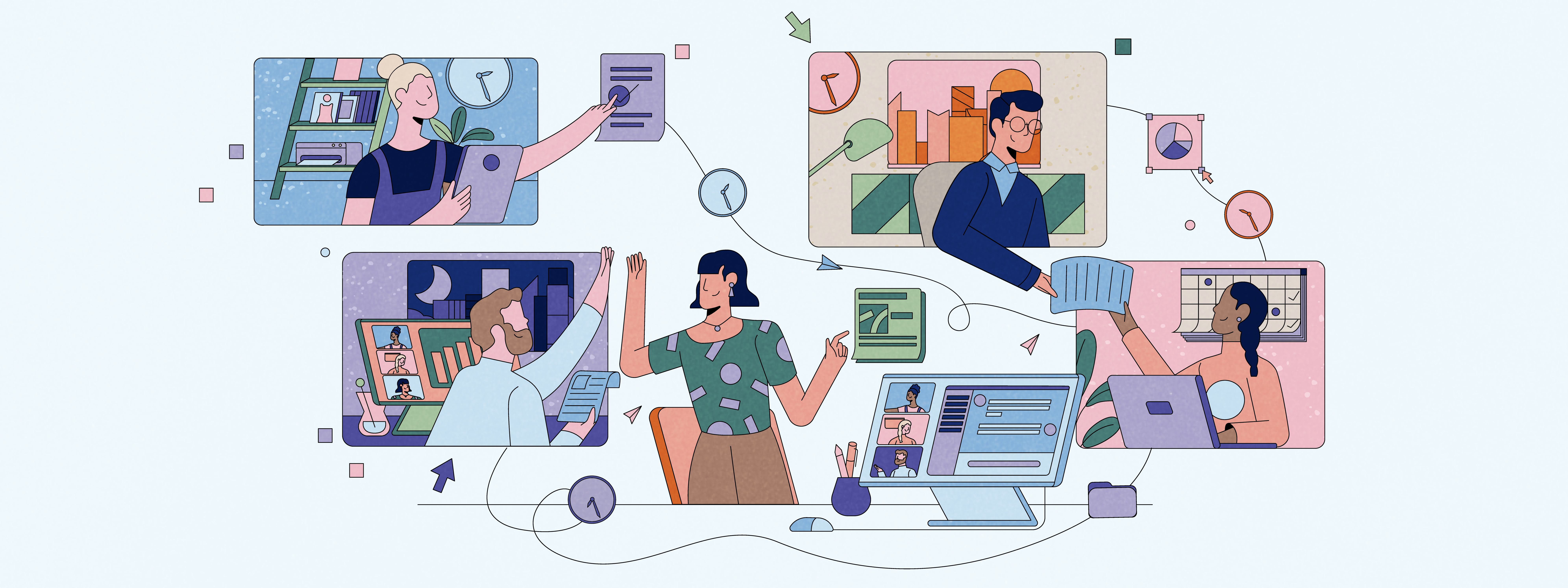How teams can stay connected and productive while working alone
Teams today suddenly find themselves isolated from one another but still needing high levels interaction. Remote collaboration can be tricky, though, and many people are left unsure about how to get their work done.
Innovating through change
As organizations around the world face seemingly insurmountable challenges, the ability to innovate is crucial to how well they weather the storm. They need to find creative solutions in all aspects of their business — adopting new processes, embracing technology in new ways and fostering a culture that is agile and adaptable. Innovation is critical to navigate the immediate crisis and to position themselves for success after it passes.
But innovation is hard, even under the best conditions. It requires teams to be actively engaged with one another in a rapid exchange of ideas, where teammates can build on each other’s thoughts and make concepts visible to each other. That’s tough to do when people are in the same room, but today, teams suddenly find themselves isolated from one another and unsure about how to get their work done as they work remotely, often for the first time. Product development teams, operations and other disciplines are rapidly trying to pivot their work to meet the new demands of the current reality. Many are being asked to create new things from scratch in just a few days — not in months or years.
“When it comes to generative work, teams need a digital platform where they can co-create content.”
Patricia Kammer, Principal Researcher, Steelcase
Collaborating Digitally
Creating something new, whether it’s a process or a product, is called generative collaboration and requires different types of behaviors and activities to be successful. Everyone on the team needs to have a solid understanding of what teammates are working on and how that impacts their individual work so when they come back together they are able to move the project forward. If team members are not on the same page, they will end up spending more time doing rework, which will impact their speed.
But how can teams doing generative collaboration stay on the same page when they’re working remotely? According to Kammer, the first thing they should do is find digital ways to replicate the analog processes (such as whiteboards and sticky notes) they use when they’re working side-by-side. “When it comes to generative work, teams need a digital platform where they can co-create content,” explains Kammer. “By leveraging tools like Mural, Google Drive and Microsoft Teams, teams are able to orchestrate their work across the platform and develop a shared mind, a shared historical reference of where they are and where they’re going.”

Finding a Common Language
Teams need to leverage common tools to make the remote collaboration process more transparent and fluid. The problem is that individuals are often using a lot of different tools to do their individual work, which they can easily share when they are physically located together. But when they’re in different locations, like many people who are working from home right now, the use of different digital tools can lead to confusion, a lack of understanding and ultimately slowed-down processes.
So, find a common language. If everyone uses the same tools, then they can access them in equal ways and the content becomes truly shared. And the more shared it becomes, the more everyone feels like they can go in and own it and edit it in the same way. It’s not leader-led or individually owned. Everyone can contribute equally. The more teams can become fluent in using shared digital tools to capture and create a visual representation of their thinking, and then manipulate it, the less physical distance will be a barrier to collaboration.
“There are a lot of technology tools that can help us. But none of them are perfect and you need to experiment with what combination of tools work best for your team.”
Peter Boeckel, Regional Design Manager, Steelcase Asia Pacific
Living on Video
Video is another important tool that can help improve generative collaboration. Today, most web video platforms allow people to see one another as well as share content. When people can see each other, they’re able to interpret body language, gestures, expressions and other cues that help you “read the room” and they’re less likely to interrupt or speak over one another or multi-task.
Increase rituals that would be almost common in the office and then duplicate them virtually.
Embracing Community
Work is an incredibly social activity. But working remotely can lead to isolation and the feeling of being disconnected, which can hurt collaboration. The energy and dynamic nature when people are next to each other can really be contagious and make a generative session really powerful when people are physically connected. Now, teams have to find that same energy while they’re distributed. Some ideas for staying connected: Schedule “Social Hours” where you don’t discuss work, log into video to have a consistent ‘wormhole’ of connecting with each other even if everyone is doing individual work, and do a pulse check at the beginning of your daily standup for a few minutes to see how people are feeling. Increase rituals that would be almost common in the office and then duplicate them virtually.
Final thoughts on making remote collaboration easier
Reach out to your community, find the tools that work for your team and make sure you stay connected. The more you give, the more you get! Staying curious and staying connected to the things you’re working on and finding groups that you can connect with digitally can be very rich and very valuable.
If you found this blog post helpful, let us know in the comments below! We would love to connect with you during your time working from home.
Information in this blog post was adapted from a Steelcase 360 series “Making Distance Work” about working remotely. You can find more information at steelcase.com.

